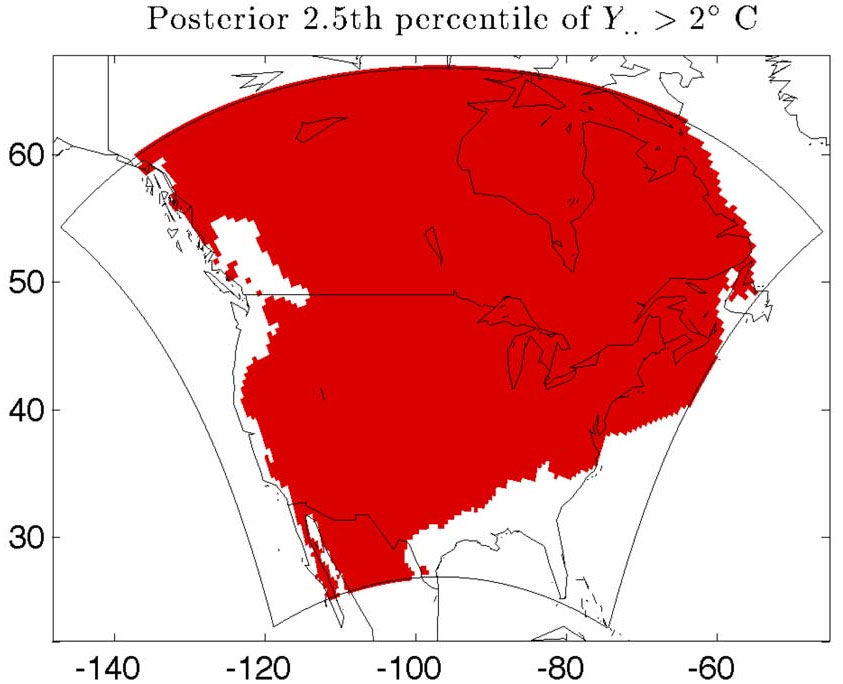Monitoring climate change with new methods
A study has just released a world warming monitoring model that uses new statistical methods that allow scientists to predict climate until 2070 and how average temperature increases across North America.
The research team of Noel Cressie and Emily Kang of Ohio State University combined both small and large scale climate monitoring models, developed equations that describe physical processes such as energy or water flow through pots. atmosphere, ocean and soil. But in order not to complicate the climate model, scientists modeled it simply by using parametric techniques, of course according to flexibility.

The model allows predicting climate in North America far to 2070 (Photo: Livescience)
Similarly, the team modeled with different levels of detail, of which 4 of the 10 surface soil layers were modeled. The results show that the models will give different answers according to geographical scale, in which large models can be predicted to cover the whole while the regional model only focuses on a smaller scale. .
To get the same answer, Kang and Cressie will initially quantify the sources of variation in the data of each model. Then deduce the temperature change and the ability to change with certainty and consensus. This has been applied by two scientists to consider North America. They divided the continent into 12 thousand grid squares, each with an area of 50km. From calculating the data of each small point, they can calculate the overall change and the seasonal warming of the whole continent. In particular, the entire Northwestern Southeast Asia and Pacific Ocean will heat up 2 degrees Celsius by 2070 with an estimated probability of 97.5%.
Although the United Nations is working to predict global climate change, Kang and Cressie's research is only part of a climate change research project in North America. However, it is not so that the above study is not valid. The two scientists have highlighted the diversity of their research results and extracted the climate change in each season with high probability (95%). The most important aspect of this study is the use of statistical methods to combine two types of models.
- France successfully launched satellite monitoring of climate change
- This is how Dubai copes with climate change
- Improving chimney emissions monitoring capacity in Vietnam
- What is Climate Change?
- Can Tho actively responds to climate change
- Marching for climate change around the world
- The terrifying change of the Earth due to climate change
- SimCLIM helps build climate change scenarios
- Climate change is happening faster than expected
- 4 shocking findings on climate change
- Too many animals and plants disappear due to climate change
- How is climate change damaging our health?
 Is the magnetic North Pole shift dangerous to humanity?
Is the magnetic North Pole shift dangerous to humanity? Washington legalizes the recycling of human bodies into fertilizer
Washington legalizes the recycling of human bodies into fertilizer Lightning stone - the mysterious guest
Lightning stone - the mysterious guest Stunned by the mysterious sunset, strange appearance
Stunned by the mysterious sunset, strange appearance